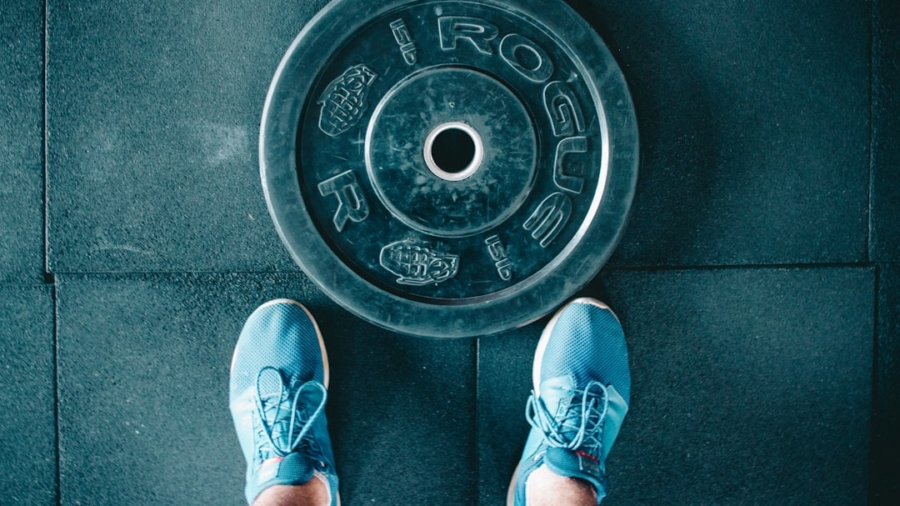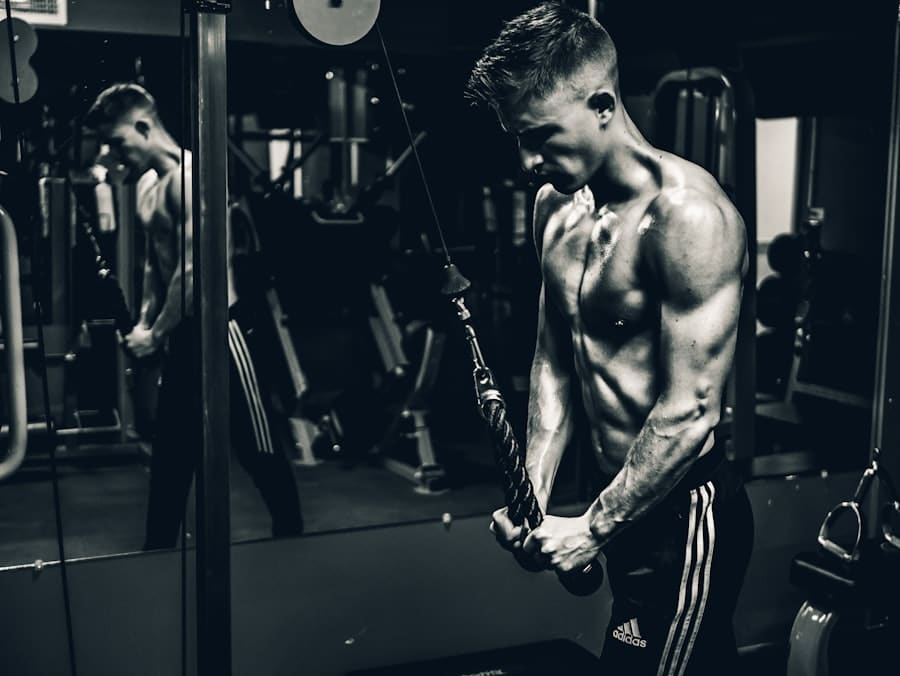Virtual Reality (VR) has emerged as a transformative technology that is reshaping various sectors, including entertainment, education, and healthcare. In recent years, the intersection of VR and fitness has garnered significant attention, leading to the development of immersive experiences that gamify physical activity. This innovative approach not only makes exercise more engaging but also addresses the growing concern of sedentary lifestyles in modern society.
By integrating gaming elements into fitness routines, VR creates an environment where users can enjoy workouts while being entertained, thus promoting a healthier lifestyle. The concept of gamification in fitness leverages the principles of game design to enhance user engagement and motivation. This involves incorporating elements such as points, levels, challenges, and rewards into physical activities.
With VR, these gamified experiences are taken to a new level, allowing users to step into virtual worlds where they can interact with their surroundings and compete against themselves or others. This immersive experience can lead to increased adherence to fitness regimens, as users are more likely to return to activities that they find enjoyable and rewarding.
Key Takeaways
- VR and fitness gamification combine virtual reality technology with exercise to create an immersive and engaging workout experience.
- Using VR for fitness can lead to improved physical health, increased motivation, and enhanced gaming experiences.
- VR has the potential to motivate physical activity by providing immersive and interactive environments that make exercise more enjoyable.
- VR enhances the gaming experience for fitness by allowing users to interact with virtual environments and track their progress in real time.
- The integration of VR and health monitoring allows for real-time tracking of vital signs and performance metrics during exercise.
The Benefits of Using VR for Fitness and Health
Breaking the Monotony of Traditional Workouts
Traditional exercise routines can often feel monotonous, leading to decreased motivation over time. In contrast, VR fitness applications transport users to dynamic environments where they can engage in various activities, from dancing in a virtual club to climbing mountains or battling enemies in a fantasy realm.
A Personalized Fitness Experience
VR can cater to a wide range of fitness levels and preferences. Whether someone is a seasoned athlete or a beginner looking to get started on their fitness journey, VR offers tailored experiences that can accommodate individual needs. For instance, many VR fitness games allow users to adjust difficulty levels or choose specific workouts that align with their goals.
Enhancing Motivation and Achievement
This level of immersion can make workouts feel less like a chore and more like an adventure, encouraging users to push their limits and explore new forms of exercise. This adaptability not only enhances the user experience but also fosters a sense of achievement as individuals progress through their fitness journeys at their own pace.
The Role of VR in Motivating Physical Activity
Motivation is a critical factor in maintaining a consistent fitness routine, and VR has proven to be an effective tool in this regard. The immersive nature of virtual environments can create a sense of presence that traditional workouts lack. Users often report feeling more engaged and focused when exercising in VR, which can lead to longer workout sessions and increased overall activity levels.
The gamified elements inherent in many VR fitness applications also serve as powerful motivators; users are incentivized to complete challenges, earn rewards, and achieve personal bests. Social interaction is another motivating factor that VR can enhance. Many VR fitness platforms incorporate multiplayer features, allowing users to connect with friends or compete against others in real-time.
This social aspect can foster a sense of community and accountability, encouraging individuals to stay committed to their fitness goals. For example, virtual group classes or competitive challenges can create an environment where users feel supported by peers, making it easier to overcome barriers to physical activity.
How VR Enhances the Gaming Experience for Fitness
The integration of gaming mechanics into fitness through VR not only makes workouts more enjoyable but also enhances the overall gaming experience itself. Traditional video games often require players to sit for extended periods, which can contribute to a sedentary lifestyle. However, VR fitness games encourage players to move their bodies actively, transforming the gaming experience into a physically engaging activity.
This shift not only promotes health but also redefines what it means to play video games. In addition to physical movement, VR enhances the sensory experience of gaming by immersing players in rich, interactive environments. High-quality graphics and spatial audio create a sense of realism that draws players into the game world.
For instance, a user might find themselves dodging obstacles in a futuristic cityscape or navigating treacherous terrain while mountain biking. These immersive experiences can evoke strong emotional responses, making workouts feel exhilarating rather than exhausting. As players become more invested in the game narrative and objectives, they are likely to push themselves harder during workouts.
The Integration of VR and Health Monitoring
As technology continues to advance, the integration of health monitoring features within VR fitness applications is becoming increasingly prevalent.
This data can provide valuable insights into an individual’s fitness progress and overall health status.
By offering real-time feedback, users can adjust their intensity levels or modify their routines based on their performance metrics. Furthermore, health monitoring capabilities can enhance safety during workouts. For example, if a user’s heart rate exceeds a certain threshold, the system can prompt them to take a break or lower their intensity.
This feature is particularly beneficial for individuals with pre-existing health conditions or those who are new to exercise. By ensuring that users remain within safe limits while still challenging themselves, VR fitness applications can promote healthier exercise habits and reduce the risk of injury.
VR as a Tool for Personalized Fitness and Health Programs
Personalization is key in any effective fitness program, and VR offers unique opportunities for tailoring experiences to individual needs and preferences. Many VR fitness applications allow users to set specific goals—whether it’s weight loss, muscle gain, or improved endurance—and then create customized workout plans that align with those objectives. This level of personalization ensures that users remain engaged and motivated as they work towards their goals.
Additionally, the adaptability of VR workouts means that they can evolve alongside an individual’s progress. As users become fitter and more skilled, the system can automatically adjust the difficulty level or introduce new challenges to keep them engaged. This dynamic approach not only prevents boredom but also encourages continuous improvement.
For instance, a user who initially struggles with balance exercises may find themselves mastering advanced yoga poses after several weeks of consistent practice in a supportive virtual environment.
The Future of VR in Fitness and Health Gamification
The future of VR in fitness and health gamification looks promising as technology continues to evolve. With advancements in hardware and software capabilities, we can expect even more immersive experiences that blur the lines between reality and virtual environments. Innovations such as haptic feedback devices could enhance the physical sensations experienced during workouts, making movements feel more realistic and impactful.
Moreover, as artificial intelligence (AI) becomes more integrated into VR systems, personalized coaching could become a standard feature in fitness applications. AI algorithms could analyze user data to provide tailored workout recommendations, nutritional advice, and motivational support based on individual performance trends. This level of customization could revolutionize how people approach their health and fitness journeys by providing them with comprehensive support that adapts to their unique needs.
The Potential Impact of VR on Fitness and Health
The potential impact of VR on fitness and health is vast and multifaceted. By transforming traditional exercise into engaging gamified experiences, VR has the power to motivate individuals to adopt healthier lifestyles while enjoying themselves in the process.
As society grapples with rising rates of obesity and sedentary behavior, the role of innovative solutions like VR becomes increasingly critical. By harnessing the power of immersive technology, we have the opportunity to create a future where physical activity is not only beneficial for health but also enjoyable and accessible for everyone. The journey towards better health through gamified fitness experiences is just beginning, and the possibilities are limited only by our imagination and technological advancements.
If you are interested in exploring the latest trends in technology, you may also want to check out this article on top trends on Instagram for 2023. Just like virtual reality is revolutionizing the fitness and health industry, social media platforms like Instagram are constantly evolving to offer new features and opportunities for users to engage with content. Stay up to date with the latest trends in both technology and social media to make the most of your online experiences.
FAQs
What is VR?
VR stands for virtual reality, which is a computer-generated simulation of an environment that can be interacted with in a seemingly real or physical way by a person using special electronic equipment, such as a helmet with a screen inside or gloves fitted with sensors.
How is VR used in fitness and health gamification?
VR is used in fitness and health gamification by providing immersive and interactive experiences that motivate users to engage in physical activity. It can simulate various environments for exercise, offer interactive games that require physical movement, and provide real-time feedback on performance.
What are the benefits of using VR for fitness and health gamification?
The benefits of using VR for fitness and health gamification include increased motivation for physical activity, improved engagement and enjoyment of exercise, the ability to track and monitor progress, and the potential for creating personalized and adaptive workout experiences.
Are there any potential drawbacks or limitations to using VR for fitness and health gamification?
Some potential drawbacks or limitations of using VR for fitness and health gamification include the cost of equipment, potential motion sickness or discomfort for some users, and the need for space to move around during VR workouts. Additionally, not all fitness activities may be suitable for VR implementation.
What are some examples of VR fitness and health gamification options?
Examples of VR fitness and health gamification options include virtual reality fitness games, immersive workout experiences, interactive training programs, and virtual environments for meditation and relaxation. These options can cater to a wide range of fitness levels and interests.



